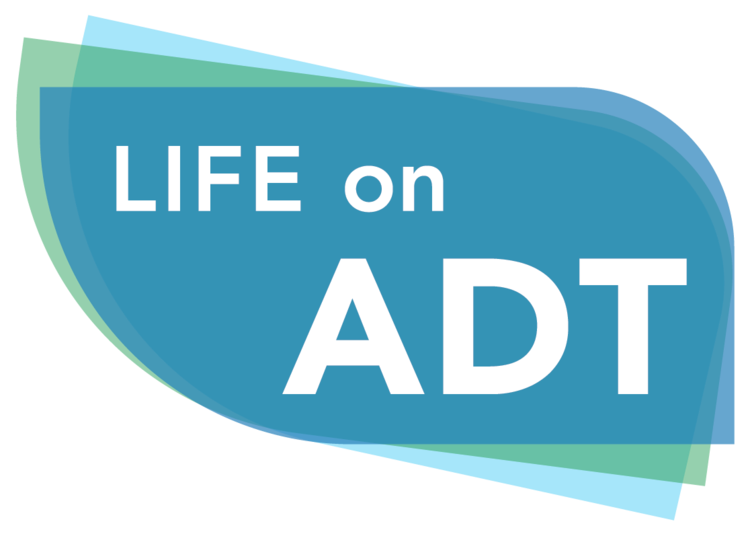There has been a slew of studies in the last decade showing that intensifying standard ADT with a second generation anti-anti-androgen (AA), such as darolutamide (Nubeqa), enzalutamide (Xtandi) or apalutamide (Erleada), can extend life for prostate cancer patients facing disease progression when curative treatments are no longer an option. As a result, it has become standard protocol to offer one of these three drugs along with ADT to patients experiencing biochemical progression (i.e., a rising PSA) after localized treatment for prostate cancer.
But all drug treatments come with side effects. In that regard, we now have a comprehensive review and a meta-analysis by Nowakowska et al. (2023) of “functional toxic effects” of the AAs when used along with standard ADT. These are the serious side effects that can directly affect how patients feel and function in everyday life.
The meta-analysis involved 12 randomized trials comprised of over 13,500 patients. The median age of the men across the studies was ~70 years and the relevant studies had follow-up from just over a year to four years.
The meta-analysis documented significant increases in fatigue with the addition of AAs to ADT. The authors also “found a 2-fold increased risk of cognitive toxic effects with the AAs.” In addition, they reported that the “AAs conferred an 87% increased relative risk of a fall compared to controls [i.e., men on ADT alone].”
Those are serious side effects. As such, any patient being offered an AA on top of ADT might reasonably want to know, how the three AAs compare in terms of both cancer control and the risk of such “functional toxic effects.
At the recent 2023 American Society of Clinical Oncology meeting, an abstract was presented by Morgans et al. (2023) that ranked darolutamide as somewhat better than its two competitors in slowing the time prostate cancer takes to progress to metastatic castration-resistant disease. But, what about those serious side effects? That brings us back to the recent metanalysis of functional toxic effects. There, the authors reviewed a 2020 paper by Fizazi et al. showing that the risk of “fatigue, mental impairment disorders, [and] falls” are all increased when ADT is intensified with darolutamide. Nowakowska et al. (2023) define “mental impairment disorders” as including “disturbances in attention.” That links up the three adverse effects. If “cognitive toxic effects” means a patient, who is not paying attention to where he places his feet when walking, and as also suffering fatigue, he is at increased risk of tripping and having a serious fall.
The authors, to their credit, recognize as a key point of their review that there is a need for physicians to “prevent, identify, and intervene on cognitive and functional toxic effects” in patients receiving AAs for prostate cancer. A preventive action that patients can take on their own is to be physically active before they start on the drugs and to maintain a good exercise program while on the drugs.
Sokolova and Graff (2023) provide an accompanying editorial to the Nowakowska et al. (2023) paper, that acknowledge the trade-off between extending life and maintaining a good quality of life. As they succinctly state “men must determine whether the potential benefits of treatment are worth the influence on their quality of life.” That is an all-to-often tough trade-off in the world of cancer. When facing it, prostate cancer patients shouldn’t face it alone but talk it over with those close to them, for their decision will influence not just themselves, but also their loved ones.
References:
Morgans, A., Shore, N., Khan N., Constantinovici, N., Khan, J., Chen, G., Xu, J., Ortiz, J., & George, D. Comparative real-world (RW) evidence on darolutamide (Daro), enzalutamide (Enza), and apalutamide (Apa) for patients (Pts) with nonmetastatic castration-resistant prostate cancer (nmCRPC) in the United States: DEAR. Journal of Clinical Oncology, 21(16\_suppl, 5097. https://doi.org/10.1200/JCO.2023.41.16\_suppl.5097
Nowakowska, M., Ortega, R., Wehner, M., & Nead, K. (2023). Association of Second-generation Antiandrogens With Cognitive and Functional Toxic Effects in Randomized Clinical Trials: A Systematic Review and Meta-analysis. JAMA oncology, e230998. https://doi.org/10.1001/jamaoncol.2023.0998
Sokolova, A., & Graff, J. (2023). Balancing Treatment Benefits of Androgen-Receptor Signal Inhibitors and Quality of Life in Patients With Prostate Cancer. JAMA oncology, 10.1001/jamaoncol.2023.0982. https://doi.org/10.1001/jamaoncol.2023.0982
Fizazi, K., Shore, N., Tammela, T., Ulys, A., Vjaters, E., Polyakov, S., Jievaltas, M., Luz, M., Alekseev, B., Kuss, I., Le Berre, M., Petrenciuc, O., Snapir, A., Sarapohja, T., Smith, M., & ARAMIS Investigators. (2020). Nonmetastatic, Castration-Resistant Prostate Cancer and Survival with Darolutamide. The New England journal of medicine, 383(11), 1040–1049. https://doi.org/10.1056/NEJMoa2001342
